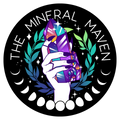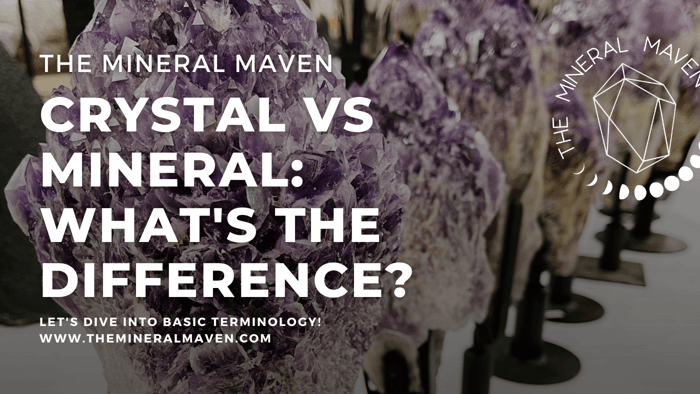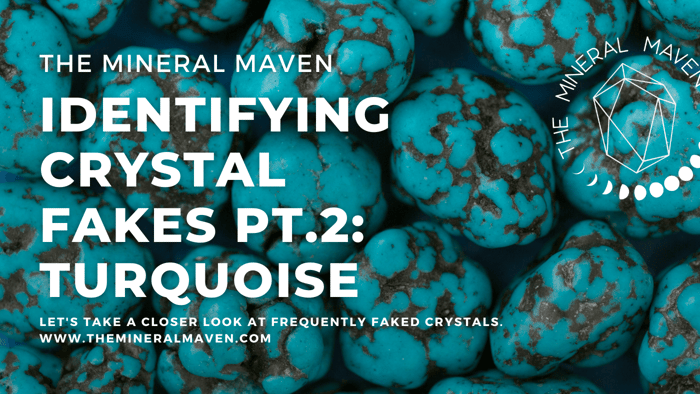We colloquially throw around the terms "crystal", "mineral", "rock" and "gem" pretty often in the metaphysical/spiritual side of the gem & mineral industry. While I don't think there's anything wrong with referring to all of your pieces as "crystals", or with sellers using that term in a general sense, I have had a few folks ask about the difference between the various terms (specifically crystal vs. mineral) so I figured I'd get into the specifics! Before comparing the terms to each other, we must first define them.
Definitions
Crystal: Crystal specifically refers to a solid material that has a highly ordered structure at the microscopic level (a crystal lattice).
Mineral: Though this term has different definitions, in this context specifically, a mineral is defined as "a naturally occurring inorganic element or compound having an orderly internal structure and characteristic chemical composition, crystal form, and physical properties" (Bates and Jackson, The Glossary of Geology).
Rock: In geology, a rock is typically defined as a naturally occurring mineral material - composed of either a single mineral or an aggregate of minerals (or mineraloid matter).
Gem: Donald Clark, CSM (founder of the International Gem Society) defines gems as "Minerals that have been chosen for their beauty and durability, then cut and polished for use as human adornment.” Though even he acknowledges that this definition doesn't entirely capture what we refer to as gems (such as organics like pearl and amber). Since I'm not in the jewelry industry, I don't carry much material I'd consider gems, so I typically reserve use of the term in reference to faceted/finished material of a higher quality (like this gemmy amethyst) or the occasional quality cabochon.
Examples
Considering the above mentioned definitions, I've included some examples in the table below.
Term |
Examples |
Notes |
| Crystal | Quartz, beryl, tourmaline, malachite, fluorite, calcite, gypsum | These all have ordered structure at the microscopic level, and specific crystal habits at the macroscopic level. Though the habit shape varies by crystal, some examples are botryoidal, nodular, prismatic, and striated. |
| Mineral | Silicates (like quartz), halides (like fluorite), carbonates (like calcite), oxides (like hematite) | These are some of the basic classifications of minerals based on their chemistry and crystal habits. |
| Rock | Limestone (contains calcite or aragonite), larvikite (contains feldspar), granite (contains quartz and feldspar) | These are aggregates of one or more minerals with the minerals listed in the parentheses. Some rocks are even formed of non-mineral material like coal (organically derived carbon). |
| Gem | Quality beryl (like aquamarine, emerald), diamonds, opals, corundum (like ruby, sapphire) | Gems are best defined by their quality, ability to be cut & polished, and their association with adornments through time and space. |

Crystal vs Mineral: an example of a crystal AND a mineral. Pink Danburite crystal from Mexico coated in fine sparkly Quartz crystal druse.
So What's The Difference?
Crystal vs. Mineral
Since (by definition) minerals require an orderly internal structure, all minerals are crystals.
However, there are crystals that are not minerals because they are either organic or man-made. So all minerals are crystals, but not all crystals are minerals. Some great examples of crystals that are not minerals are synthetic crystals and sugar.
Rock vs. Mineral
Rocks being an aggregate of one or more minerals, my favorite example to illustrate this concept is a chocolate chip cookie. Think of rocks as cookies, and the minerals are the ingredients. So rocks are made up of minerals.
Notable Exceptions
There are some crystal industry faves that don't fall into any of the above mentioned classifications, so here are some notable non-crystals/non-minerals.
Obsidian: mineral-like, but not technically a mineral since it's not crystalline (doesn't have an organized structure) - it's glass. This amorphous solid is sometimes known as a "mineraloid" - not a true mineral but mineral-like. Obsidian is a volcanic glass that forms naturally due to volcanic activity.
Amber: not a mineral since it's organic and has no orderly internal arrangement of atoms, amber is fossilized resin (tree sap). Over times it hardens into amber, but it's neither a crystal, mineral, or rock.
Shungite: so technically shungite is noncrystalline carbon, but what we often see carved & sold in the crystal industry is actually shungite rock; which is an amorphous metamorphic mineral that contains a lower percentage of the organic carbon (only 30-50%).
So what did you think of this first installment of the new blog? I want to remind you again that there's nothing wrong with colloquially calling everything "crystals" - I just know that some folks have asked about the specific terminology of crystal vs. mineral as it can be a bit confusing.
I hope I've cleared it up! Please feel free to let me know in the comments & you're welcome to ask follow up questions.





